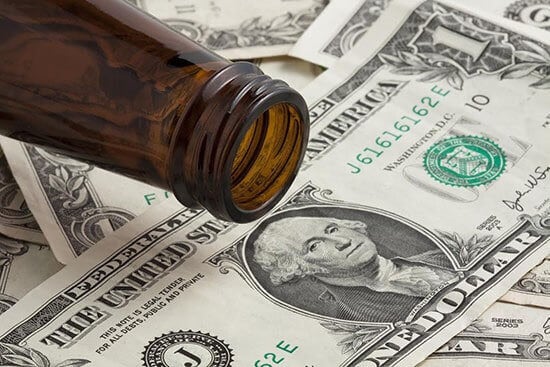Study finds strong correlation between price and alcohol consumption
In 2010, Tennessee, which has the country’s highest combined taxes on beer, had the lowest binge drinking rate.
And other states with relatively low alcohol taxes, like Montana and Wisconsin, had higher rates of binge drinking.
Coincidence?
No, says a team of researchers from the BU School of Public Health, who conclude in a new study that higher alcohol taxes protect against binge drinking.
The study, published in the journal Addiction, found that a one percent increase in alcohol beverage prices from taxes was associated with a 1.4 percent decrease in the proportion of adults who binge drink. Most previous studies have examined the effect of taxes on average consumption, while the effect of taxes on high-level drinking has been controversial.
“This is really significant for public health,” says lead author Ziming Xuan, an SPH assistant professor of community health sciences. He says it’s significant because binge drinking causes more than half of nearly 90,000 alcohol-attributable deaths in the United States each year and accounts for three-quarters of the $224 billion in annual economic costs of those deaths.
“We know that price is strongly associated with alcohol consumption,” Xuan says. “Our findings provide further empirical support for the effect of alcohol taxes on excessive levels of alcohol consumption, such as binge drinking.”
The study is the first of its kind to show that as combined alcohol taxes rise, binge drinking rates fall. Taxes accounted for approximately 20 percent of the difference in the prevalence rates of binge drinking across US states.
Binge drinking was defined as consuming five or more drinks for men, or four or more drinks for women, per occasion. The percentage of adults who reported binge drinking in US states was based on data from the Behavioral Risk Factor Surveillance System surveys from 2000 to 2010.
National surveys have shown that approximately one in six US adults binge drinks about four times a month, consuming eight or so drinks each time. About 90 percent of the alcohol drunk by those under the age of 21 is in the form of binge drinking. The prevalence of binge drinking among men is about twice the prevalence as it is among women.
A number of studies in recent years have found inverse relationships between the price of alcoholic beverages, influenced by taxes, and overall drinking rates, youth drinking rates, alcohol-related deaths, and violence.
The new SPH study found that using a measure that combines both volume-based and value-based taxes on alcohol was associated with a stronger preventive effect on binge drinking and produced more precise statistical results compared to the conventional use of only volume-based excise taxes. Using the comprehensive measure, the combined taxes had about twice the impact on binge drinking compared to using only excise taxes.
Most alcohol tax studies in the United States have relied on specific excise taxes—so-called volume-based taxes, levied as a fixed dollar amount per unit volume—for beer as a convenient proxy measure for taxes affecting the price of alcohol. This is in part because volume-based taxes have historically been either the sole or predominant form of alcohol taxation.
However, most states have not increased volume-based taxes to keep pace with inflation. And 46 states and the District of Columbia also apply value-based taxes to alcohol—taxes based on a percentage of price, such as ad valorem excise taxes and sales taxes.
Xuan and study senior author Timothy Naimi, a School of Medicine associate professor of medicine and of pediatrics and an SPH associate professor of community health sciences, say many previous US studies might be underestimating the effect of higher taxes on reducing alcohol consumption.
Their study demonstrates a key vulnerability of volume-based taxes: their erosion over time due to inflation. The researchers say the failure to account for value-based taxes could lead to “inadequate characterization” of the relationship between tax levels and consumption.
“This study emphasizes the importance of assessing multiple coexisting tax types—and possibly tax structure—for characterizing the relationship between tax and related outcomes, evaluating the effects of tax policy interventions, and for planning tax policy interventions,” they say.
Naimi says further research on alcohol consumption is warranted using the combined tax measure, because studies have shown that “of all policies, taxes have the strongest evidence of reducing alcohol-related harms.”
The study was supported by a grant from the National Institutes of Health. Researchers from the Department of Economics and Institute for Health Research and Policy, University of Illinois, and the Division of Epidemiology and Community Health, University of Minnesota School of Public Health, contributed to the study.


